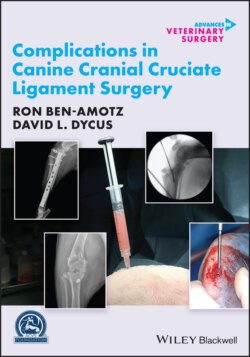Читать книгу Complications in Canine Cranial Cruciate Ligament Surgery - Ron Ben-Amotz - Страница 30
2.4 Surgical Procedure 2.4.1 Surgeon Factors – Hand Hygiene, Glove Perforation, Surgical Technique
ОглавлениеSurgeon microbiome contributes to bacterial contamination of surgical sites and therefore surgeon hand and forearm preparation is recommended to reduce the microbial burden prior to donning sterile surgical gowns and gloves.
Two main options exist for hand and forearm preparation – surgical scrub versus alcohol‐based rubs (ABRs) (Figure 2.5). Chlorhexidine and povidone‐iodine are the surgical scrubs most commonly used in veterinary medicine and are equally effective at reducing bacterial colony‐forming units [55]. ABRs, however, provide a faster and more effective sustained reduction in bacteria counts [1, 56]. The use of ABRs, preceded by hand washing using nonmedicated soaps to remove gross debris and oils, results in increased compliance likely due to the reduced time required to apply an ABR than to perform a traditional scrub [57]. A traditional scrub requires a minimum of 3‐minute contact time to be effective, whereas ABRs may be applied in under 2 minutes [58]. A traditional scrub is not required for the first case of the day prior to use of ABRs, as has been previously recommended. Use of ABRs as sole hand and forearm preparation is appropriate as prescrubbing with disinfecting soaps may decrease the effect of ABRs [59, 60]. ABRs are now considered superior for presurgical hand asepsis due to their improved dermal tolerance, along with their reduction in water usage, carbon waste, and potential chances for recontamination on sink fixtures compared to standard scrubs [61].
Figure 2.5 (a) Avagard™ chlorhexidine gluconate 1% + ethyl alcohol 61%. (b) Sterillium™ ethyl alcohol 80%.
The incidence of intraoperative contamination reported to occur secondary to glove perforations ranges between 18% and 43% [46, 62, 63]. An increased number of glove perforations are associated with orthopedic surgery, likely in part due to the use of power equipment, screws, pins, and wire [62, 63]. Use of thicker orthopedic gloves was not associated with a reduced rate of glove perforation [63]. However, a hospital‐wide policy change to the use of orthopedic gloves for TPLO surgeries, in addition to other protocol changes, lead to a reduction in SSI rate in one hospital [64]. Identification of glove perforations was poor, but the addition of color indicator undergloves increased the identification rate [62, 63]. The primary surgeon is at highest risk for glove perforation [62, 63].
Evidence exists that SSI rates may differ between surgeons within an institution and may be associated with surgeon experience [14, 27]. Surgeons performing >20 TPLO procedures had reduced SSI rates compared to novice surgeons in one study [27]. While this may not be true in all institutions, two factors that may contribute to a novice surgeon having increased SSI rates include prolonged surgery times and inferior surgical techniques. Excellent surgical technique following Halstead's principles of surgery may aid in reduction of SSI development due to reduced tissue trauma, preservation of blood supply, limited hemorrhage, reduction of dead space, tissue apposition under minimal tension, and adherence to strict aseptic technique [65].
